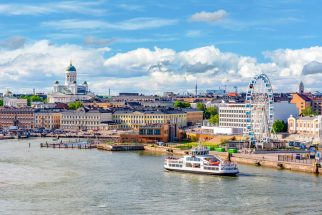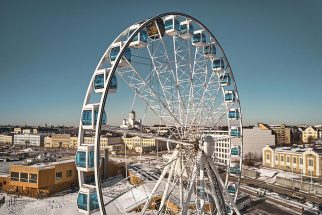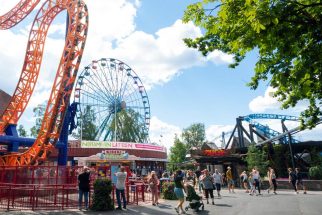Located on the Gulf of Finland a step away from the Russian border, Helsinki owes its charm more than to the monuments and beautiful buildings to the wonderful natural environment that surrounds it. The numerous parks and beaches make it very pleasant especially in summer, when due to its latitude it acquires a very special charm.
3 days in Helsinki is enough time to see the majority of the city and enjoy it. The Helsinki Card is a good choice in order to get access to major attractions.
The best time to visit it is between May and September when the temperatures are a bit milder (with a maximum of 26°C in July).
Top things to do & see in Helsinki
Select the following sights and activities to discover best tickets and tours available in Helsinki.
Helsinki: The Nordic Hub of Culture and Innovation
| Country | Finland |
| Time in Helsinki | GMT+2 |
| Language spoken | Finnish |
| Population | 656,229 (source: City of Helsinki, 2023) |
| Currency | Euro (€, EUR) |
| Airports | Helsinki-Vantaa Airport (12 mi / 19 km) |
Helsinki, the capital city of Finland, stands on the shores of the Baltic Sea. This vibrant urban center is not only the most populous city in Finland but also represents a hub for politics, education, media, culture, and science. Helsinki’s distinct charm encompasses its maritime heritage and modern architecture, a gateway between the West and the East for centuries.
Helsinki’s influence reaches beyond its historical and geopolitical significance, evolving as a noted center of thought and innovation in northern Europe. Founded in 1550 by King Gustav I of Sweden, the city originally served as a trading town intended to compete with Tallinn to the south, then part of Denmark. However, it wasn’t until the city became the capital of Finland in 1812 that it truly began to flourish.
Today, Helsinki’s skyline is marked by landmarks such as the Helsinki Cathedral, Uspenski Cathedral, and the modern Oodi Library, which reflect the city’s rich architectural blend that spans neoclassical, art nouveau, and contemporary styles. Helsinki also hosts notable annual cultural events like the Flow Festival and the Helsinki Festival, attracting artists and audiences from around the globe.
The city is recognized for its high quality of life, advanced education system, and robust healthcare services. Helsinki continues to progress as an example of sustainable city planning and public transportation solutions, with extensive green spaces and a commitment to carbon neutrality by the year 2035. Its educational institutions, like the University of Helsinki, contribute significantly to both national education and global research initiatives.
Helsinki’s economic landscape is equally dynamic, spearheaded by sectors such as information technology, service industries, and maritime businesses. The presence of various multinational corporations and startups underlines the city’s status as an economic powerhouse in the Baltic region. Such diversity also spurs multiculturalism, drawing expatriates and students, which enrich Helsinki’s cosmopolitan ambiance further.
Where is Helsinki?
Helsinki is situated in southern Finland, stretching along the shoreline of the Gulf of Finland, to the north of the Baltic Sea.
Distances:
| Route | Distance by car | Time by car |
|---|---|---|
| Helsinki to Turku | 102 mi / 164 km | 1 hour 40 min |
| Helsinki to Tampere | 106 mi / 171 km | 1 hour 45 min |
| Helsinki to Oulu | 379 mi / 610 km | 5 hours 40 min |
What is Helsinki famous for?
Helsinki is renowned for its architectural beauty, with a landscape marked by both historic buildings and modernist designs. It’s also celebrated for vibrant cultural events and a strong emphasis on innovation and design.
History
The vibrant city of Helsinki, located in southern Finland on the shore of the Gulf of Finland, has a rich history that dates back thousands of years. From its early inhabitants to its status as a modern European capital, Helsinki’s history is a fascinating journey through time.
Prehistoric Times – Ancient Settlements
The area now known as Helsinki was originally inhabited by hunter-gatherer societies. Archaeological evidence suggests that these early inhabitants settled in the region thousands of years ago, utilizing the rich marine resources of the Baltic Sea for their livelihood.
1550-1809 – Swedish Rule
Helsinki was officially founded in 1550 by King Gustav I of Sweden as a trading town, to compete with Tallinn to the south in Estonia, which was then part of the Danish kingdom. During this period, Helsinki was a small town, with economic activities centered around fishing and trading. Despite its strategic location, the town did not thrive initially and was plagued by poverty, wars, and diseases.
1809-1917 – Russian Empire
After the Finnish War, Finland became an autonomous Grand Duchy under the Russian Empire in 1809. Helsinki was designated the capital of the Grand Duchy in 1812 by Tsar Alexander I of Russia, replacing the older eastern capital of Turku. This change was part of an effort to reduce Swedish influence in Finland. The construction of significant architectural projects such as the neoclassical buildings around Senate Square, including Helsinki Cathedral, was initiated in this period, laying the foundation for the city’s modern layout.
1917-Present – Independence and Growth
Finland declared its independence from Russia in 1917. Following independence, Helsinki underwent rapid development and grew into a vibrant modern city. It was heavily influenced by various architectural styles from classicism to modernism, reflecting its progress and adaptability. Significant events such as the 1952 Summer Olympics put Helsinki on the global map. Today, Helsinki is known for its high quality of life, innovative design scene, and active cultural life, making it a prominent European capital.
Visit Helsinki
What to see and do in Helsinki, Finland.
Exploring Helsinki offers a delightful mix of historical and modern attractions. Here’s what you can see and do in the Finnish capital:
- Visit the historic Senate Square to see Helsinki Cathedral.
- Explore Suomenlinna, a sea fortress that is a UNESCO World Heritage site.
- Enjoy the vibrant atmosphere of the Market Square and taste local Finnish foods.
- Discover contemporary Finnish design at the Design District.
- Walk through the serene paths of Central Park, an urban oasis.
Annual events in Helsinki
Helsinki hosts a variety of events throughout the year that reflect its rich cultural tapestry:
- Helsinki Festival: Held in August, this is Finland’s largest arts festival.
- Vappu (Walpurgis Night): Celebrated from April 30 to May 1, this is a major Finnish holiday and carnival that fills the streets with joyous celebrations and picnics.
- Helsinki Book Fair: Taking place in October, it attracts literature lovers and international authors.
- Slush: Held in late November, Slush is one of the world’s leading startup events.
Best time to visit Helsinki
The best time to visit Helsinki is during the summer, from June to August, when the weather is warmest and the city is full of life with numerous outdoor events and festivals. However, for those who enjoy winter sports and the magical Northern Lights, visiting in the winter months from December to February offers a different kind of charm.
Is Helsinki worth visiting?
Helsinki is undoubtedly worth visiting. It offers a unique blend of scenic beauty, historical richness, and contemporary culture. Visitors can enjoy a wide range of activities from exploring museums and galleries to indulging in the local culinary scene and participating in vibrant festivals. Furthermore, Helsinki’s design and architecture are renowned worldwide, making it a must-visit destination for those interested in innovative and sustainable urban development.










